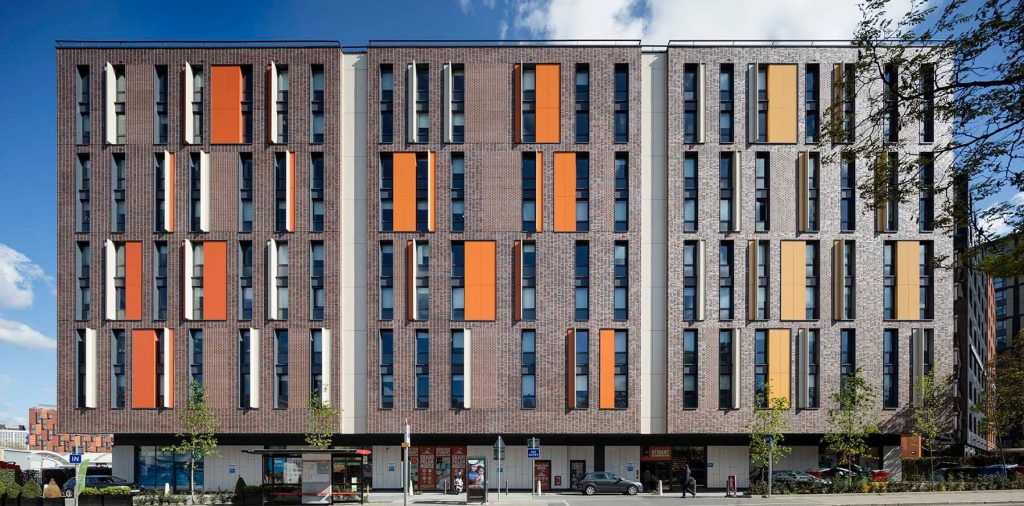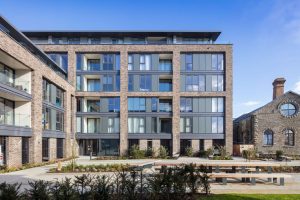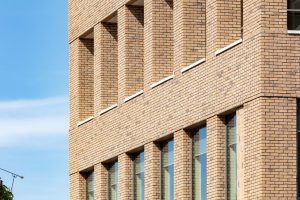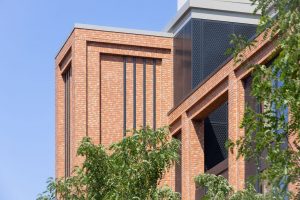The popularity of brick cladding systems is rising due to project time and cost constraints. Here, Jazz Rigden, Sales Director of Aquarian Cladding Systems, discusses why they are increasingly becoming the perfect solution for buildings across the UK.
Not so long ago, it was a hard sell to convince an architect to use a brick cladding system.
There has always been a love for real brick in the UK, as it adds a durable, warm, and natural facade to a building. It is, and always will be, a timeless material, and there are no signs to suggest real brick is losing its popularity.
Faced with a large range of external cladding solutions to choose from, persuading an architect that they weren’t cheating with a ‘fake brick solution’, which compromised their professional integrity, was a struggle.
Specifiers remain under increasing pressure to reduce both construction costs and build-time on projects and we’ve noticed an increasing acceptance by most architects of the many benefits of brick cladding systems to provide a robust brick façade.
We’re experiencing an increase in specifiers turning to brick slip cladding systems for a variety of building types as they create an appearance that is indistinguishable from traditional masonry. They perform the same non-loadbearing function as traditional bricks but with additional benefits, which have an influence on how a building is constructed.
A practical solution
Nowadays there is a range of brick cladding solutions, which provide more options than traditional brickwork due to their light weight and efficiency of construction, without having to compromise on long term performance and appearance.
On modern building sites, productivity is critical, so brick cladding systems are an ideal solution to save time and labour costs, as they ‘re comparatively lighter and easier to handle, making them easier to install. And due to their simplicity and ability to be applied in almost all-weather conditions, installation times are dramatically reduced when compared with traditional masonry construction.
Brick cladding systems can be installed on almost any surface, provided the substrate is structurally sound and able to bear the weight and, once fixed and pointed, they are durable, weatherproof, and maintenance-free.
Further cost reductions can be achieved by eliminating the need for masonry supports and by reducing foundation and structural frame requirements. Prelim costs, including replacing scaffolding with mechanical access equipment, greater flexibility of build sequence and earlier project completion, ultimately minimising the risk of programme over-run, can also contribute to significant savings.

Aesthetically pleasing
There are many aesthetic advantages that are possible with brick slips thanks to their design flexibility, presenting exciting and interesting opportunities for architects and developers to capitalise on.
Using the right type of brick slip can mean buildings blend into their surroundings nicely, by matching existing or nearby brickwork while offering its own unique presence.
Thanks to a hugely versatile and extensive range of natural colours and finishes, brick cladding systems allow for complex and intricate designs that may not be achievable with traditional brick.
And provided they are installed by trained, skilled specialist companies, brick cladding systems will provide an improved quality of appearance compared with brickwork, which is typically unpredictable.
Another consideration is that brick slip systems are relatively thin in profile, which means they can incorporate layers of insulation and contribute to thinner walls, allowing the internal floor area to be increased, thus providing commercial benefit and a real value of space.
The right solution
The type of cladding a specifier chooses will affect how a building performs in terms of weatherproofing and protection in the event of a fire, and the kind of maintenance it will require overtime.
Due to the current understandable focus on fire performance, specifying the right cladding for a project is paramount.
It’s essential that the cladding supplier’s technical team are consulted to ensure the system meets the needs of a project in terms of combustibility, weathertightness, fatigue and thermal movement. This is done by ensuring the system has been independently tested and certified.
There are several brick cladding systems using brick slips that provide the perfect solution for most common substrates.
For example, Gebrik, which consists of lightweight, non-load bearing 60mm thick insulating panels and corners can be used on any building under 18 metres.
Or for a non-combustible Cladding, A1-rated solution, MechSlip or NaturAL-X, which both use 28mm lightweight brick ‘tiles’ with an innovative unique profile, can be mechanically fixed to any building at any height, via an engineered aluminium support rail system.
The benefits of brick cladding systems cannot be ignored. Over the past 15 years we’ve seen them used on many award-winning buildings to prove they are a perfect solution for the demands of designing and constructing a modern building. Just like traditional brickwork, we think brick cladding systems are here to stay.
Working with architects, contractors, developers and cladding contractors, Aquarian’s brick slip cladding systems have been used on many award-winning buildings across a wide range of sectors. They have all been thoroughly tested and BBA-certified to ensure clients have the peace of mind that they will provide safe, beautiful brick facades for many years to come.
To discuss your current project requirements and for more information, call 0808 223 9080 or, email info@aquariancladding.co.uk.




